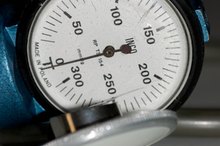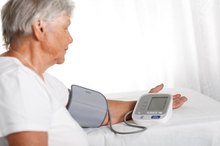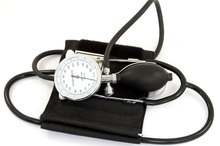What does fact checked mean?
At Healthfully, we strive to deliver objective content that is accurate and up-to-date. Our team periodically reviews articles in order to ensure content quality. The sources cited below consist of evidence from peer-reviewed journals, prominent medical organizations, academic associations, and government data.
- National Institute of Health: National Heart Lung and Blood Institute
- National Institute of Health: National Heart Lung and Blood Institute
- The Mayo Clinic: Low Blood Pressure
- American Heart Association
The information contained on this site is for informational purposes only, and should not be used as a substitute for the advice of a professional health care provider. Please check with the appropriate physician regarding health questions and concerns. Although we strive to deliver accurate and up-to-date information, no guarantee to that effect is made.
What If Blood Pressure Numbers Are Too Close?
Blood pressure is read through systolic and diastolic pressure. The resulting number indicates the pressure exerted on the walls of the arteries as the heart beats. If the resulting numbers are close it may be an indication of high blood pressure or low blood pressure 2.
If you are experiencing serious medical symptoms, seek emergency treatment immediately.
Systolic
Systolic pressure indicates pressure when the heart contracts. The systolic number is the top half of the blood pressure reading 2.
Diastolic
What Is the Formula for Calculating Blood Pressure?
Learn More
The diastolic number indicates pressure when the heart is at rest. Diastolic readings are the bottom half of the blood pressure reading 2.
High Blood Pressure
If the diastolic number is high and closely matches a systolic number in the hundreds (e.g. 130/120), this indicates stage two high blood pressure. Stage two high blood pressure requires immediate attention as it presents a high risk of cardiac incident, blood vessel rupture or damage to the kidneys 2.
Low Blood Pressure
How to Read the SYS DIA Pulse
Learn More
If the systolic number is low and close to the diastolic number (e.g. 90/80) this indicates low blood pressure 2. Low blood pressure may not be harmful depending on the range of systolic and diastolic numbers, but can be indicative of more serious problems if numbers are severely low or pressure drops suddenly, according to the Mayo Clinic 2.
Optimum Blood Pressure
Ideal blood pressure ranges are systolic pressure around 120 and diastolic pressure around 80, according to the American Heart Association 23 'inline-reference::American Heart Association'). Both high and low blood pressure can be treated with lifestyle modification and prescription medications 2.
Related Articles
References
- National Institute of Health: National Heart Lung and Blood Institute
- The Mayo Clinic: Low Blood Pressure
- American Heart Association
- Siu AL. Screening for high blood pressure in adults: U.S. Preventive Services Task Force recommendation statement. Ann Intern Med. 2015;163(10):778-86. doi:10.7326/M15-2223
- American Heart Association. Understanding blood pressure readings. Last reviewed November 30, 2017
- National Institute on Aging. High blood pressure. Updated May 2, 2018
- Rockwood MR, Howlett SE. Blood pressure in relation to age and frailty. Can Geriatr J. 2011;14(1):2-7. doi:10.5770/cgj.v14i1.1
- AgePage: High Blood Pressure. National Institute on Aging.
- Aging changes in the heart and blood vessels. MedlinePlus NIH.
Writer Bio
Jullie Chung writes regularly for various websites. She is a nationally certified fitness trainer and performance enhancement specialist through the National Academy of Sports Medicine and trains regularly in yoga, flatwater kayaking, boxing and mixed martial arts. An avid outdoor fan, she regularly hikes, climbs and trail runs.







